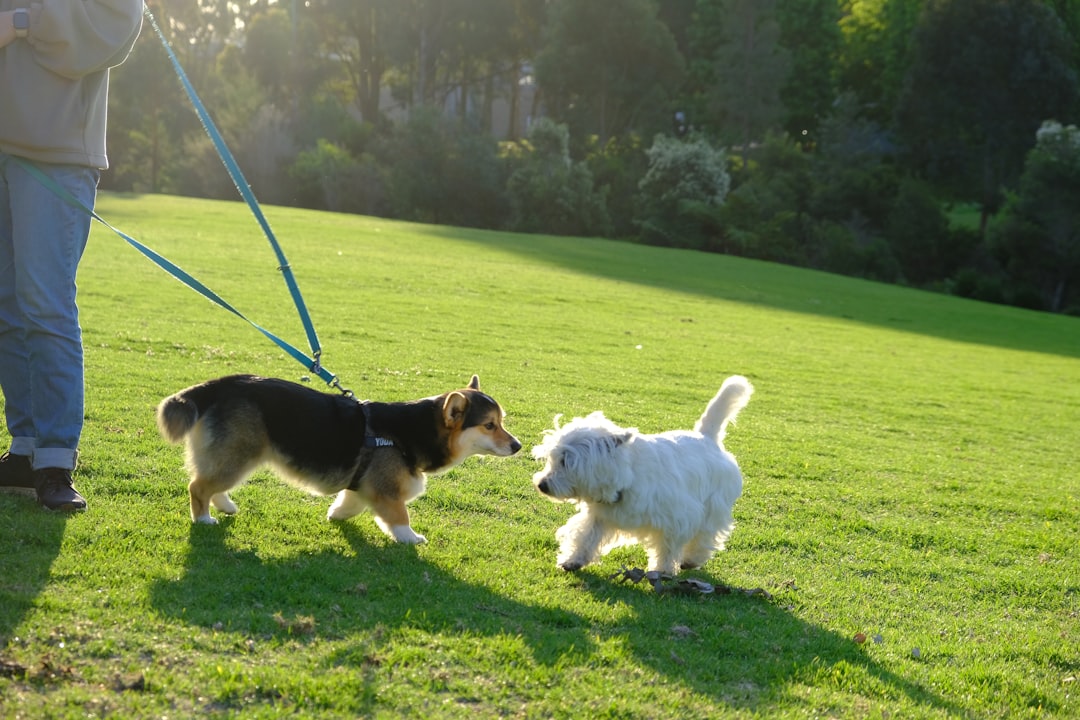Picture this: your beloved dog retreats to their favorite corner after a particularly chaotic day. Their ears are slightly back, tail low, and they’re seeking distance from all the household commotion. This isn’t stubbornness or misbehavior. Your dog is actually demonstrating something profoundly human. They need space to process, decompress, and regain their emotional equilibrium.
Most dog lovers don’t realize that many dogs experience some form of anxiety or fearfulness, yet we often overlook their need for emotional boundaries. Research suggests that dogs can be affected by their owners’ stress levels, making their need for personal space even more critical. Just like us, dogs have limits to their social tolerance and require retreat spaces to maintain their mental well-being.
The Science Behind Canine Stress and Its Physical Impact

When we think about stress, we usually focus on its emotional aspects. However, scientific studies reveal that fear, particularly fear of strangers may contribute to chronic stress that can negatively impact a dog’s health. The constant state of hypervigilance takes a tremendous toll on their bodies.
Dogs experiencing stress may pant without exercise, have urgent bathroom needs, or develop gastrointestinal issues including vomiting and loss of appetite. Studies suggest that chronic emotional stress may have negative physiological effects, explaining how chronic anxiety affects cardiovascular, immune, and endocrine systems.
Think about your own stress responses. When overwhelmed, your body rebels with headaches, stomach problems, or sleep issues. Dogs experience similar physical manifestations, but they can’t verbally communicate their discomfort. Their bodies become the messenger.
Understanding Your Dog’s Personal Space Bubble

Every dog has an individual personal space bubble that changes based on their emotional state, with anxious or aroused dogs requiring significantly more space than relaxed, happy dogs. Personal space represents the physical area around an individual where encroachment feels threatening or uncomfortable, and respecting these boundaries requires recognizing signals and receiving consent before approaching.
Most people assume all dogs love attention and interaction. This misconception leads to boundary violations that can escalate stress. When dogs avoid interaction with people or other dogs, forcing the issue isn’t helpful – we should respect their choice.
Understanding canine body language prevents many bite incidents, as dogs communicate through distance-decreasing signals meaning “yes, come closer” or distance-increasing signals meaning “stop, you’re making me uncomfortable”. Learning to read these subtle cues transforms your relationship with your dog from one of assumption to one of mutual respect.
Creating Safe Retreat Spaces for Emotional Recovery

Having a safe space where dogs can retreat when needing solitude and relaxation is essential for their mental and emotional well-being, providing security and comfort as their personal sanctuary. All dogs, regardless of personality or energy levels, benefit physically, mentally, and emotionally from having a dedicated retreat space, and allowing them to choose when to leave situations boosts their confidence.
Think of it as their personal bedroom. While crates are popular, safe spaces can include raised dog beds, closets, or entire rooms, with larger areas sometimes incorporating crates to create cozy, inviting environments that offer mental, physical, and emotional benefits.
Essential elements include comfortable bedding appropriate for their size with joint support, cozy washable blankets for warmth, favorite toys for mental stimulation and entertainment promoting happiness and relaxation. The goal is creating their version of your favorite reading nook where they can truly unwind.
Recognizing When Your Dog Needs Space

Dogs communicate their need for boundaries through subtle body language that’s easy to miss. Many dog body language signals are subtle and happen quickly, requiring observation of the whole body and situation context, plus recognizing signs of relaxation to know when they’re not feeling this way.
When faced with unwelcome situations, dogs may exhibit avoidance or displacement behaviors, focusing on something else like sniffing or digging the ground, licking their genitals, or simply turning away. These aren’t random behaviors but deliberate communication attempts.
Dogs might move away or actively avoid whatever worries them, and sometimes that includes you or someone you’re with, such as a veterinary surgeon, with some dogs trying to hide or withdraw from situations. Stress makes it harder for dogs to follow familiar commands like “sit,” and they might grab treats roughly when they’d usually take them gently, or refuse treats altogether.
The Connection Between Boundaries and Behavioral Issues

Stressed behavior in dogs may be misinterpreted as excitement or poor training, with dogs sometimes labeled as “bad” or punished for misbehaving when they’re actually communicating feelings of discomfort. This creates a devastating cycle where punishment increases stress, which increases unwanted behaviors, leading to more punishment.
Behavioral issues often stem from fear or discomfort, and providing a safe space gives an outlet for anxieties, considerably diminishing unwanted behaviors like excessive barking or chewing while supporting healthy coping mechanism development.
Consider separation anxiety, which affects a significant percentage of dogs. Rather than viewing destructive behavior as spite or revenge, understanding it as an expression of emotional overwhelm changes everything. A safe space acts as a sanctuary where dogs can escape stressful situations, playing a critical role in mitigating fear or nervousness, and when dogs know they have a secure retreat area, it significantly eases stress levels and promotes daily calm.
Teaching Respect for Personal Space

While we love interacting with our dogs, there are times when we need space, whether they’re being overly excitable when we come home, breathing too close to our food during movies, or getting in the way when greeting guests. Teaching boundary respect benefits everyone in the household.
Training dogs to respect personal space is essential for both parties – you need peace and quiet sometimes, your partner wants to cuddle without the dog in the middle, and it helps prevent separation anxiety when you leave the house.
Dog boundary training is essential for household safety, especially in multi-dog homes, and with positive reinforcement and proper training methods, dogs can learn to respect rules and behaviors that create a peaceful environment. The technique involves standing up and using a “stop” hand signal when dogs approach, causing them to instinctively halt and hesitate, paired with a clear verbal command to indicate they must wait for permission to enter your personal space.
The Mental Health Benefits of Respecting Canine Boundaries

A stable environment with consistency in routine like regular feeding times, walks, and play sessions provides dogs with security and predictability, minimizing unpredictability to reduce stress and anxiety, with quiet safe spaces where they can retreat when overwhelmed being essential for emotional health.
When we respect our dogs’ need for space, something beautiful happens. Respecting their boundaries reinforces feelings of safety and trust because it tells dogs “I respect your feelings,” and their safe space can bring tremendous change to how they rest, relax, and regulate stressors and emotions.
All dogs benefit physically, mentally, and emotionally from having a dedicated space to retreat to, regardless of their personality and energy levels. This isn’t about creating anxious, fearful dogs. It’s about fostering confident, well-adjusted companions who trust that their human family understands and respects their emotional needs.
The most profound shift occurs in the relationship itself. When dogs have a designated space where they feel secure, they better cope with environmental changes or stressful events, creating a foundation of trust that enhances every interaction you’ll share.
Conclusion

Understanding that dogs need emotional boundaries isn’t about creating distance. It’s about building deeper connections through mutual respect and understanding. When we honor their need for space, provide safe retreat areas, and recognize their stress signals, we’re not just improving their quality of life. We’re demonstrating the same emotional intelligence we’d want in our human relationships.
As we continue learning about dogs’ emotional lives, it becomes increasingly clear they are complex beings with rich emotional worlds, and this knowledge enhances our ability to care for them while deepening the bond we share. Your dog’s need for boundaries isn’t a flaw to fix but a natural requirement to respect.
What do you think? Does recognizing your dog’s need for emotional space change how you view their behavior?

Gargi from India has a Masters in History, and a Bachelor of Education. An animal lover, she is keen on crafting stories and creating content while pursuing a career in education.






